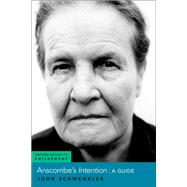
Anscombe's Intention A Guide
by Schwenkler, JohnBuy New
Rent Textbook
Rent Digital
Used Textbook
We're Sorry
Sold Out
How Marketplace Works:
- This item is offered by an independent seller and not shipped from our warehouse
- Item details like edition and cover design may differ from our description; see seller's comments before ordering.
- Sellers much confirm and ship within two business days; otherwise, the order will be cancelled and refunded.
- Marketplace purchases cannot be returned to eCampus.com. Contact the seller directly for inquiries; if no response within two days, contact customer service.
- Additional shipping costs apply to Marketplace purchases. Review shipping costs at checkout.
Summary
Though recognized universally as one of the definitive works in analytic philosophy of action, Anscombe's book is often dismissed as unsystematic or obscure, and usually read through the lens of philosophical concerns very far from her own. Schwenkler's Guide offers a careful and critical presentation of Anscombe's main lines of argument at a level appropriate to advanced undergraduates but also capable of benefiting specialists in action theory, moral philosophy, and the history of analytic philosophy. Further, it situates Intention in a context that emphasizes Anscombe's debts to Aristotle, Aquinas, and Wittgenstein, and her engagement with the work of contemporaries like Gilbert Ryle and R.M. Hare, inviting new avenues of engagement with the ideas of historically important philosophers.
Author Biography
John Schwenkler is Associate Professor of Philosophy at Florida State University, where he has taught since 2013. He specializes in the philosophy of mind, the philosophy of action, ethics, epistemology, and the philosophy of cognitive science.
Table of Contents
Preface
Abbreviations
Introduction: The Project of Intention
Interpretive Précis
Outline of the Text
The Commentary
1 Preliminaries
1.1 The three headings (§1)
1.2 Predictions and expressions of intention (§§2-3)
1.3 Action first (§§3-4)
1.4 Summary discussion
2 Beginnings of an Account
2.1 'Why?'-questions (§5)
2.2 The three epistemic conditions (§§6-8)
2.3 Reason, motive, and cause (§§9-16)
2.4 'For no reason' / 'I don't know why I did it' (§§17-18)
2.5 Summary discussion
3 The Unity of Action
3.1 An extra feature? (§19)
3.2 Further intention (§§20-21)
3.3 The A-D order (§§22-23, 26)
3.4 Intention and foresight (§§24-25, 27)
3.5 Summary discussion
4 Knowledge Without Observation
4.1 Raising difficulties (§28)
4.2 False avenues of escape (§§29-30)
4.3 Beginning to sketch a solution (§§31-32)
4.4 Summary discussion
5 Practical Reasoning
5.1 A difference in form (§33)
5.2 Calculation (§33-35)
5.3 The role of 'wanting' (§§35-36)
5.4 The guise of the good (§37-41)
5.5 '... an order which is there ...' (§§42-43)
5.6 Summary discussion
6 Practical Knowledge
6.1 The Thomistic background
6.2 'A form of description of events' (§§46-48)
6.3 The cause of what it understands (§§44-45, 48)
6.4 Doing without knowing?
6.5 Practical knowledge through perception?
6.6 Summary discussion
7 Concluding Discussion
7.1 Intentional and voluntary (§49)
7.2 Intention for the future (§§50-52)
Glossary of Terms
Bibliography
An electronic version of this book is available through VitalSource.
This book is viewable on PC, Mac, iPhone, iPad, iPod Touch, and most smartphones.
By purchasing, you will be able to view this book online, as well as download it, for the chosen number of days.
Digital License
You are licensing a digital product for a set duration. Durations are set forth in the product description, with "Lifetime" typically meaning five (5) years of online access and permanent download to a supported device. All licenses are non-transferable.
More details can be found here.
A downloadable version of this book is available through the eCampus Reader or compatible Adobe readers.
Applications are available on iOS, Android, PC, Mac, and Windows Mobile platforms.
Please view the compatibility matrix prior to purchase.
